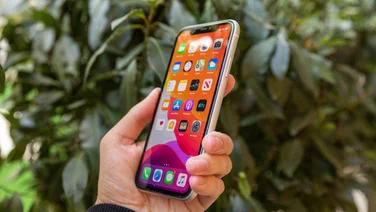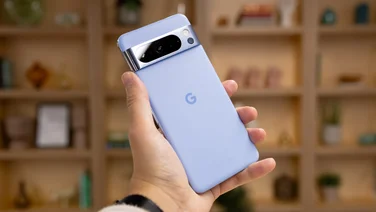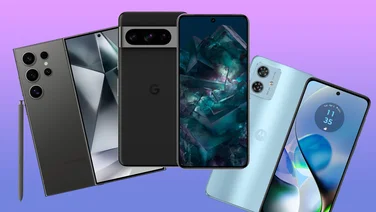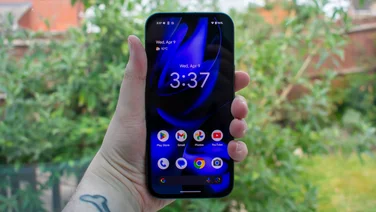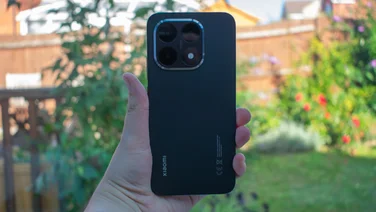To help us provide you with free impartial advice, we may earn a commission if you buy through links on our site. Learn more


















- Unrivalled durability
- Big, bright display
- Much-improved selfie camera
- Middling battery life
- No performance improvements
- Only two OS updates
The Motorola Moto G56 has plenty of pedigree behind it. The ultra-cheap Moto G series has long been one of the best places to find budget phones that marry decent functionality with affordable prices – case in point, last year’s Moto G55 is currently our favourite option in this price range.
With a bigger battery, larger display and improved durability, the Motorola Moto G56 offers a solid selection of upgrades over its predecessor. But does it do enough to snatch away the best budget phone crown?
Motorola Moto G56 review: What you need to know
Some of the upgrades here are expected, some are a pleasant surprise. First, there’s the standard generational upgrade to the processor, with a 2.6GHz MediaTek Dimensity 7060 chipset running the show, backed by 8GB of RAM and 256GB of onboard storage.


















Less expected is the battery improvement, with the capacity rising from 5,000mAh to 5,200mAh. The display is also a little bigger this time around, rising from a 6.49in LCD panel to 6.72in, and the selfie camera has doubled its pixel count from 16 to 32 megapixels.
Most noteworthy, however, is that Motorola has gone from not offering any official dust and water resistance rating – the G55 was simply stated as having a “water-repellent design” – to including belt-and-braces IP68/IP69 certification.
Price and competition
The Moto G56 launched for the same £199 as its predecessor, which gets you 8GB of RAM and 256GB of storage. However, at the time of writing, you can pick one up for as little as £150 directly from Motorola.


















Competition under £200 is relatively sparse, so the major threats cost a little more than the Moto G56. The most notable is the CMF Phone 2 Pro, which starts at £211 for the 128GB model, or you can double your storage and get the 256GB version for £249. The big benefit here is the 2x telephoto camera, but dust and water resistance isn’t as stron,g and it only has one, rather weak, speaker.
Another strong option is the OnePlus Nord CE 5, which starts at £239 for the 128GB model. At the time of writing, the 256GB model is only £10 more, at £249. The main benefit here is the excellent performance and battery life, but once again, it’s not as water-resistant as the Moto, and it also lacks Gorilla Glass over the display.
Design and key features
Fitting that larger display requires a heftier frame. The Motorola Moto G56 measures 76 x 8.4 x 166mm – a few millimetres taller and wider than its predecessor and a hair thicker. It weighs a bit more, too, up from 182g to 200g.


















It still feels nicely manageable, and the design has been tweaked to fall more in line with the likes of the Motorola Edge 60 series, with a square camera bump and four “lenses” – in reality, only two of these are cameras, with the others being a flash and a dummy lens for the sake of symmetry. This makes it look almost indistinguishable from its pricier brethren, with the only sign of cost-cutting being the G56’s thicker display bezels.
The rear is coated with Motorola’s standard vegan leather, and there are four Pantone-approved colours to choose from: you can get the more understated Black Oyster and Grey Mist models from any retailer, but if you want a splash of vibrant colour, Dazzling Blue and Dill are only available directly from Motorola.
The Gorilla Glass over the display has been upgraded to version 7i, but as alluded to above, the most important change is the new IP68/IP69 dust and water resistance rating. This is the most robust grade that is given right now, and assures that the phone is fully dust-proof, able to withstand submersion up to 1m for 30 minutes and able to survive high-pressure, high-temperature jets of water from any angle.


















There are plenty of phones that cost two or three times this price that don’t have that level of durability, so to see it here is a huge boon for the Moto G56.
Additionally, the Moto G56 is compliant with the MIL-STD-810H standard, which assesses a device’s ability to survive extreme conditions, including temperature fluctuations, shock and humidity. It’s not a guarantee of survival in these conditions, so don’t go putting it to the test yourself, but it’s still a level of ruggedness that we rarely see in this price range.
The feature set is broader than most: you get a microSD card slot that allows you to expand the storage by up to 2TB, and Motorola is one of a decreasing number of manufacturers that is holding fast with the inclusion of a 3.5mm headphone jack. There’s a fingerprint reader on the power button on the right edge, and the selfie camera supports face unlocking; both were efficient and consistent in my testing.


















The stereo speakers put out reasonably loud, clear audio with decent depth to it – especially when playing Dolby Atmos-enabled content. They’re still on a budget phone, so don’t expect the world, but audio is a step above the competition.
I’m a big fan of Motorola’s software, too: the Moto G56 runs Android 15 out of the box, and the Hello UI launcher is one of the cleanest and accessible implementations that you can get. Preinstalled apps are blissfully few, and unique features like quickly activating the torch by shaking the phone or opening the camera by twisting your wrist continue to help Motorola stand out from the competition.
To its credit, Motorola has finally, begrudgingly, upped the software support pledge for its cheapest phones, now offering two years of OS updates and four years of security patches (instead of the one and three promised last year). This is an improvement, but it’s still behind the curve – the CMF Phone 2 Pro, for instance, is getting three years of OS updates and six years of security patches.
Display
The new 6.72in display has the same 2,400 x 1,080 resolution as its more compact predecessor, so the pixel density is slightly weaker this time around (392ppi compared to 405ppi), but that’s still plenty sharp, and not enough of a drop to be noticeable. It still has a 120Hz refresh rate and decent brightness, hitting 464cd/m2 on manual mode and rising to 861cd/m2 on adaptive brightness with a torch shining on the light sensor.


















We’ve got two colour profiles here, with Vivid being better suited to your streaming and gaming and Natural seeking to accurately reproduce the sRGB colour gamut. In Natural mode, I recorded a gamut coverage of 93.5% against a volume of 96.2%, and the average Delta E came back at 1.72. That’s a little higher than our target of 1 or under.
Performance and battery life
The MediaTek Dimensity 7060 chipset is a solid workhorse of a chipset, not bolting out ahead in the benchmark tests but plodding along reliably enough for most people. Opening and hopping between apps is reasonably fluid, and I never experienced noticeable slowdown when running multiple programs at once.
With that being said, the tiny bump in peak clock speed (2.6GHz up from the Moto G55’s 2.5GHz) has yielded no improvements in the Geekbench 6 tests, with the Moto G56 scoring around the same as its predecessor in both the onscreen and offscreen stakes.
It’s a shame to see no generational improvement, but these results are, at least, still competitive for this price range. The OnePlus Nord CE 5 lands far out in front, delivering considerably faster speeds than the rest, but otherwise, the Motorola Moto G56 keeps pace well with the competition.
The IMG BXM-8-256 GPU used here is the same as the one inside the Moto G55 (and the Moto G54), so it came as little surprise that the Moto G56 delivered roughly the same results as both of its generational predecessors in the GFXBench tests.
For this kind of money, these results are acceptable; simple fare like Candy Crush and Solitaire run fine, and I even managed to race a few laps in Asphalt Legends with reasonably fluid framerates, but this isn’t a phone for intense 3D gaming.
As it turns out, the slightly bigger battery is no match for the additional power needs of the larger display. In our standard looping video battery test, the Moto G56 ran for 22hrs 10mins – a little over two hours less than its predecessor.
This shouldn’t have you reaching for the charger during the day if you habitually plug your phone in overnight, but it’s still the weakest of the selection here. The OnePlus Nord CE 5 is the best in this price range, lasting for more than 10 hours longer than the Moto G56.
The Moto G56 supports wired charging up to 30W, which is reasonably nippy for such a cheap phone. In my testing, this brought the battery from empty to 50% in 28 minutes, and on to 100% in around 1hr 15mins.
Cameras
The camera selection is very similar to last year. That’s not a major issue because, as far as the main camera goes, Motorola was onto a winner. It’s a 50-megapixel (f/1.8) lens with optical image stabilisation (OIS) and consistently delivered bright, detailed shots in testing.

It’s also one of the better night cameras in this price range; detail can be a little fuzzy in places, but the colours are nice and vibrant, and the artificial brightening proves effective, without flooding the shot with too much visual noise.

I wasn’t happy to see the ultrawide camera return without any improvements, however. This lens produces a colour tone that broadly matches the main camera, but the detail offered by the 8-megapixel sensor leaves something to be desired.
Also, strangely, it no longer offers a macro focus mode, despite all of the hardware being the same as last year. The results from last year’s model were mediocre, however, so this is likely Motorola cleaning out options that nobody was using.

The one area in which I saw photography improvements was the selfie camera. Last year’s 16-megapixel (f/2.4) lens has been swapped for a sharper 32-megapixel sensor with a wider f/2.2 aperture, and you can see the difference this makes below. There’s a lot more detail, skin tones are richer and more natural, and the focal lock is stronger.
We’re back to stagnation with the video recording; the Moto G56 shoots 1080p footage at either 30 or 60fps, meaning it lags behind the CMF Phone 2 Pro, which has a 4K/30fps option.
Motorola Moto G56 review: Verdict
The Motorola Moto G56 isn’t the most exciting budget phone around – it doesn’t offer an AMOLED display or a telephoto camera like the CMF Phone 2 Pro, nor is it immensely powerful and long-lasting like the OnePlus Nord CE 5.
Instead, its main appeal is that it’s dirt-cheap, and the recent discount on Motorola’s website makes it an even better bargain. It’s a solid budget buy at its RRP, but at £150, it’s the best cheap phone around.
Nothing else in this price range gets you the durability credentials that the Moto G56 offers, and very few include user-friendly features like a microSD slot or 3.5mm headphone jack. Throw in a big, bright display, solid performance and reliable cameras, and the Moto G56 continues Motorola’s winning streak in the budget phone space.


